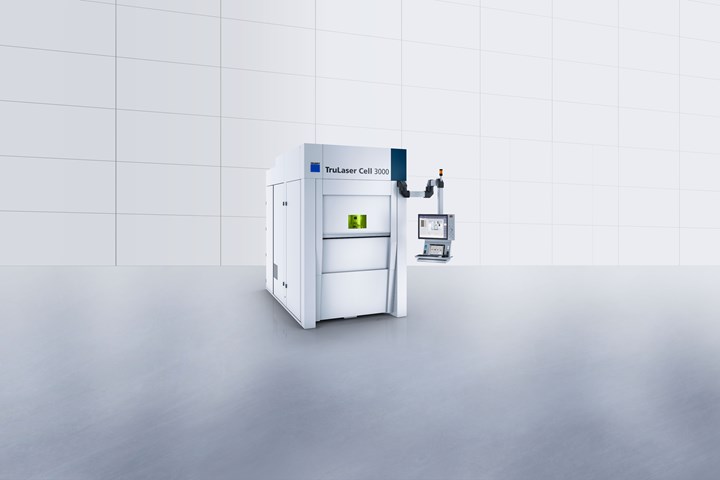LMD Processing Extends Time Needed Between Tool and Die Repairs
The Trumpf Inc. five-axis TruLaser Cell 3000 combines laser welding with laser metal deposition, extending the number of cycles between die repairs and bringing more control to the process.
With the compact and high-precision five-axis TruLaser Cell 3000 from Trumpf Inc., users can repair and add features onto existing molds, tools and dies. The TruLaser Cell 3000 is a laser metal deposition (LMD) system that uses powder metal and a laser to deposit material, bringing more control and lower heat input into mold and die repair, particularly when compared with the more manual repair process that is traditionally performed, Trumpf says. The five-axis cell’s flexibility enables operators to choose between six different processing nozzles, unlocking customized deposition rates, surface roughness and high hardness tool steels like H11 or H13. The laser welding technology from Trumpf may also help extend the number of cycles between die repairs compared to traditional manual repair methods.
The TruLaser Cell 3000 can handle a variety of jobs from prototypes to large-scale series production with extensive automation. It is also said to be particularly cost-effective in the laser processing of small- to medium-sized components with top quality.
Related Content
-
What Is Scientific Maintenance? Part 1
Part one of this three-part series explains how to create a scientific maintenance plan based on a toolroom’s current data collection and usage.
-
What is Scientific Maintenance? Part 2
Part two of this three-part series explains specific data that toolrooms must collect, analyze and use to truly advance to a scientific maintenance culture where you can measure real data and drive decisions.
-
How to Use Thermal Management to Improve Mold Cooling
A review of common mold cooling issues and possible solutions, including 3D printing applications.













